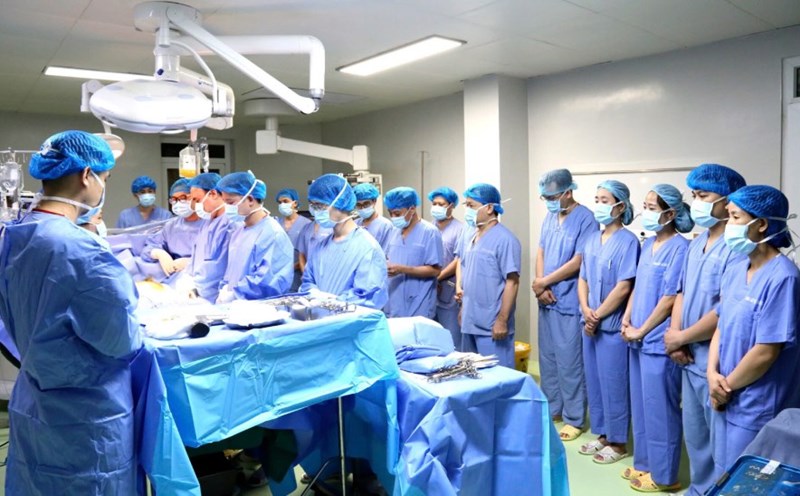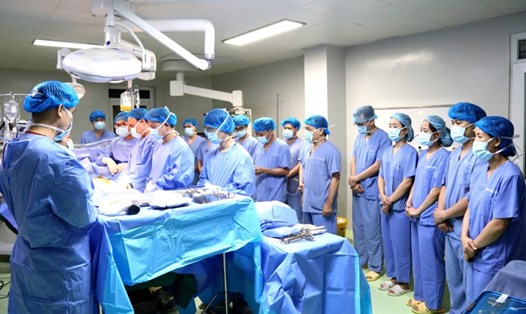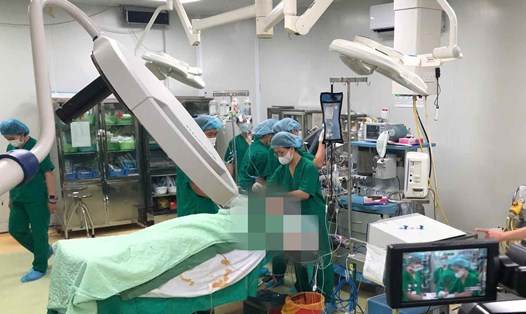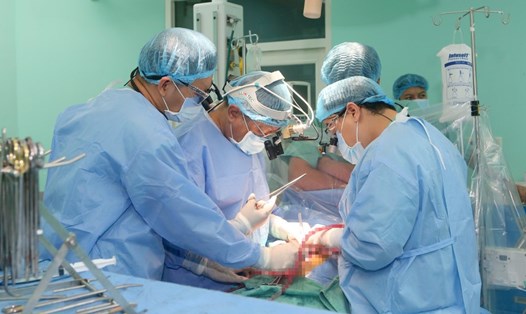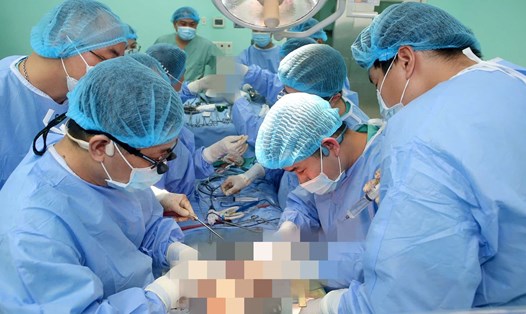Try your best to save the patient's life
On the evening of October 16, patient L.T.S, born in 1988, an excavator driver, with a history of good health, experienced a severe headache and numbness in his limbs and was taken to the emergency room. On the way to Bach Mai Hospital, the patient lost consciousness, fell into a coma, had convulsions in his limbs, stopped breathing and had a heart attack.
The patient was admitted to the A9 Emergency Center, Bach Mai Hospital in a coma and out-of-hospital circulatory arrest. After emergency treatment, the patient's heart beat again and natural circulation was re-established, but he was still in a deep coma. The patient was transferred to the Stroke Center and had a CT scan of the brain's arteries, and was diagnosed with coma and out-of-hospital circulatory arrest due to severe diffuse subarachnoid hemorrhage suspected to be due to rupture of a cerebral vascular malformation.
After the intervention, the patient was transferred to the Intensive Care Center for further treatment with the diagnosis: Coma after circulatory arrest, cerebral hemorrhage due to rupture of the right vertebral artery aneurysm, pneumonia.
The transfer of life
After 9 days of intensive treatment and resuscitation, the patient's condition did not improve, he gradually fell into a deep coma, lost his reflexes and was at risk of brain death.
Through many hospital-wide consultations, with the assessment that the patient was at high risk of approaching brain death, the hospital explained the patient's prognosis to the patient's family and discussed with the patient's family about the National Organ and Tissue Donation Program with the aim of bringing life to the patient.
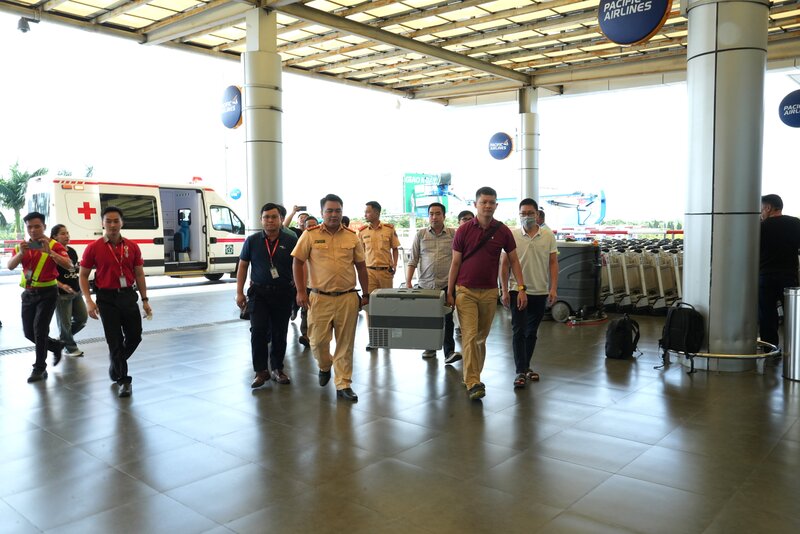
The patient's family expressed their wish to donate the patient's organs to save lives and bring life to others.
After completing the legal procedures with the guidance and support of the National Organ Transplant Coordination Center, the patient was assessed as brain dead according to strict legal procedures. The Council met and assessed 3 times, each time 6 hours apart, each sign, each symptom, clinical and paraclinical parameter, etc. were carefully evaluated and considered by the Brain Death Diagnosis Council.
Immediately afterwards, under the direction and support of the National Organ Transplant Coordination Center, Viet Duc Hospital, 108 Military Central Hospital, Bach Mai Hospital, Hue Central Hospital, etc. coordinated to perform surgery to remove the patient's organs and transfer them to the recipient.
Under the direction of the National Organ Transplant Coordination Center, the patient's heart was transported to Hue Central Hospital for a heart transplant for a patient with heart failure, the liver was transported to 108 Military Central Hospital for a liver transplant, and 2 kidneys were transplanted by doctors from 108 Military Central Hospital at Bach Mai Hospital for 2 patients with end-stage renal failure.
In particular, the heart transplant at Hue Central Hospital, flight number VJ1567 of Vietjet Air brought staff from the National Organ Transplant Coordination Center, doctors from Bach Mai Hospital and a donor heart to transplant into a 39-year-old male patient with heart disease at Hue Central Hospital. The retrieval, transportation, and transplant were performed as quickly as possible to save the patient's life.
The life transfer at Bach Mai Hospital has gone through a challenging journey and achieved good results.

